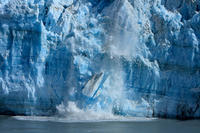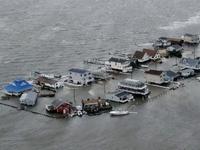-
Cost to U.S. of cybercrime lower than earlier estimates
The Center for Strategic and International Studies (CSIS) and security firm McAfee published a revision of McAfee’s previous estimate of the cost of cybercrime to the United States, reducing the amount from $1 trillion to $100 billion. Experts say this should not be a reason for complacency.
-
-
State Department approves U.S.-Canada pipeline, but it is not Keystone
The State Department has approved a U.S.-Canada pipeline, but it is not the Keystone XL project which is still being debated. The Vantage Pipeline will carry ethane from North Dakota through Saskatchewan into Empress, Alberta.
-
-
UMaine student develops affordable option for shoring up Maine’s aging bridges

The State of Maine Department of Transportation is responsible for 2,772, or 70 percent, of the bridges in the state. A 2007 report found that of those bridges, 205 are more than 80 years old, 244 were considered in poor condition, and 213 were found to be structurally deficient. Additionally, 288 bridges were at risk of closure or weight restrictions between 2007 and 2017. Replacing all these bridges would be too costly. Researchers developed software designed specifically to assess the load rating of flat-slab bridges to determine which bridges can be repaired instead of replaced. For the bridges that can last a few more years with reinforcing instead of replacing, the researchers engineered a retrofitting system which could be applied to increase the bridge’s strength and weight limits.
-
-
Using invasive trees to develop jet fuel for U.S. Navy fighter jets

In western U.S. rangelands, native juniper and pinyon pine trees are spreading beyond their historical ecological niches and disrupting the environmental balance of their expanded range. Preliminary estimates suggest harvesting some of these hardy invaders every year could supply enough biomass to produce millions of gallons of renewable jet fuel for the U.S. Navy fighter jets.
-
-
Water purifier for soldiers, first responders successfully tested in the field

A new easy-to-carry water purifier that could give Marines and first-responders access to clean water wherever they go successfully completed its first operational test. The new purifier was developed to help reduce enormous logistical burdens already faced by forward-deployed personnel. There are two versions — one that can treat 1,000 gallons per day and one that can handle 5,000 gallons per day.
-
-
White House considering incentives for cybersecurity compliance
The Obama administration is considering whether to back tax breaks, insurance perks, and other legal benefits for companies which bolster their digital defenses. The incentives, which include limited protections from legal liability and tax incentives, would be set up to persuade power plants, water systems, chemical plants, and other critical infrastructure companies to comply with the voluntary cybersecurity rules which are being drafted as part of President Obama’s cybersecurity executive order.
-
-
Making power lines safer
Last year, blackouts left 620 million people in India without power for a couple of days, and cost the U.S. economy more than $120 billion. Electric sparking has been blamed for major bushfires in Australia. Researchers have invented and patented a way of detecting and locating potential electrical faults along long stretches of power line before they occur.
-
-
New iceberg theory points to rapid disintegration, exacerbating sea level rise

In events that could exacerbate sea level rise over the coming decades, stretches of ice on the coasts of Antarctica and Greenland are at risk of rapidly cracking apart and falling into the ocean, according to new iceberg calving simulations from the University of Michigan.
-
-
Budget cuts force DHS to scale back cybersecurity programs
Sequestration-mandated federal budget cuts are beginning to have an effect on DHS cybersecurity efforts. Since March, the department has been forced to cancel two conferences and three training sessions for utility companies on how to defend against cyberattacks.Security experts are concerned that the budget cuts are affectingimpacting cybersecurity efforts at a time where more money needs to be put into securing critical infrastructure.
-
-
New underwater robots mimic designs found in nature
In recent years, robotic underwater vehicles have become more common in a variety of industrial and civil sectors. Now, a new class of underwater robot has emerged that mimics designs found in nature. These “biomimetic” vehicles promise to lead to new underwater technologies that could help the oil and gas industry, underwater humanitarian demining, environmental monitoring, search and rescue operations, anti-terrorist activities, harbor surveillance, coastal security and fisheries management, and more.
-
-
Young engineers compete in underwater robotics race
Student-built autonomous underwater vehicles will speed through the depths of a Navy pool in a battle for supremacy at the 16th International RoboSub Competition. The competition is being held this week (22-28 July). In addition to building autonomous underwater vehicles, teams are also responsible for creating Web sites and writing journal papers that outline their work.
-
-
U.K. water industry: fracking may contaminate U.K. drinking water
U.K. water companies have warned the shale gas industry that the quality of U.K. drinking water must be protected at all costs and fracking must not harm public health. Shale gas fracking could lead to contamination of the water supply with methane gas and harmful chemicals if not carefully planned and carried out.
-
-
Spending on cybersecurity for critical infrastructure to reach $46 billion by end of 2013
The digitization of critical infrastructures has provided substantial benefits — improved productivity, better connectivity, greater efficiencies. Yet this digitization also carries significant risks. Always-on Internet connectivity has ushered in a new cyber-age in which the stakes are higher. Better to shield critical infrastructure, cyber security spending for critical infrastructure protection will hit $46 billion globally by the end of 2013.
-
-
More crude oil delivered to U.S. refineries by rail, truck, and barge
The use of rail, truck, and barge to deliver crude oil to refineries has increased, in part due to increases in U.S. crude oil production. Refinery receipts of crude by truck, rail, and barge remain a small percentage of total receipts, but the U.S. Energy Information Administration (EIA) notes that refineries across the nation received more than one million barrels per day (bbl/d) by rail, truck, and barge in 2012, a 57 percent increase from 2011.
-
-
130-year old seawall protected New Jersey town from Sandy's storm surges

Bay Head and Mantoloking sit side-by-side in Ocean County, facing the ocean. In Bay Head, Sandy flooded 88 percent of the oceanfront homes, with just one oceanfront home destroyed. In Mantoloking, more than half of the oceanfront homes were damaged or destroyed. The reason for the difference between minor structural impacts and widespread destruction: a relatively small coastal obstacle — a forgotten, 1,260-meter seawall, built in 1882 and buried beneath the beach – which reduced potential wave loads by a factor of two.
-
More headlines
The long view
Helping Strengthen America’s Critical Infrastructure
Everyday life depends on a robust infrastructure network that provides access to running water, communications technology and electricity, among other basic necessities. The experts who keep our national infrastructure secure and resilient also need a strong network to share their knowledge and train the next generation of professionals capable of solving complex infrastructure challenges.
AI and the Future of the U.S. Electric Grid
Despite its age, the U.S. electric grid remains one of the great workhorses of modern life. Whether it can maintain that performance over the next few years may determine how well the U.S. competes in an AI-driven world.
Using Liquid Air for Grid-Scale Energy Storage
New research finds liquid air energy storage could be the lowest-cost option for ensuring a continuous power supply on a future grid dominated by carbon-free but intermittent sources of electricity.
Enhanced Geothermal Systems: A Promising Source of Round-the-Clock Energy
With its capacity to provide 24/7 power, many are warming up to the prospect of geothermal energy. Scientists are currently working to advance human-made reservoirs in Earth’s deep subsurface to stimulate the activity that exists within natural geothermal systems.
Experts Discuss Geothermal Potential
Geothermal energy harnesses the heat from within Earth—the term comes from the Greek words geo (earth) and therme (heat). It is an energy source that has the potential to power all our energy needs for billions of years.
